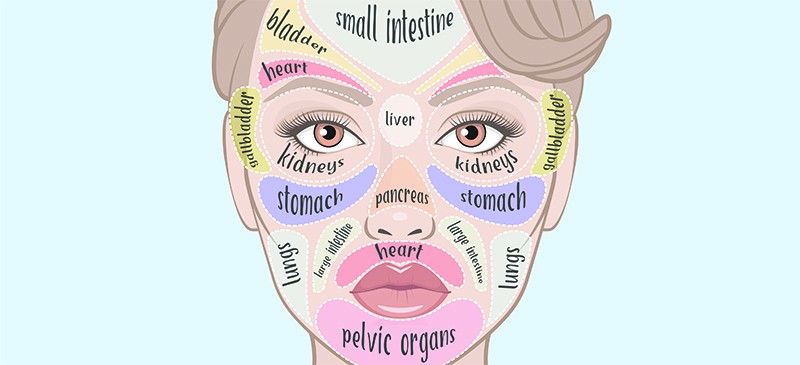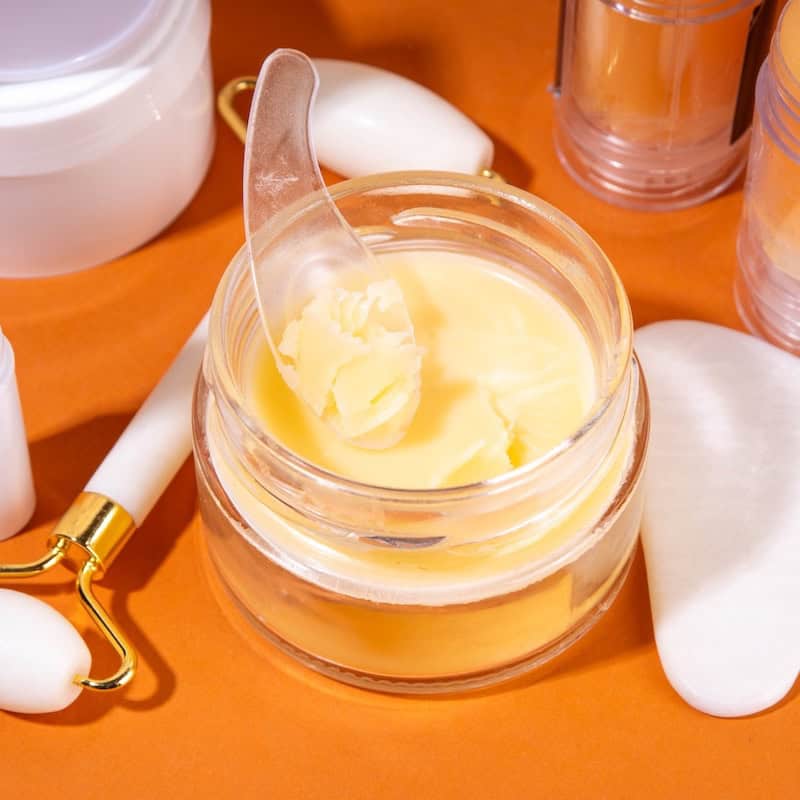This Dr. Axe content is medically reviewed or fact checked to ensure factually accurate information.
With strict editorial sourcing guidelines, we only link to academic research institutions, reputable media sites and, when research is available, medically peer-reviewed studies. Note that the numbers in parentheses (1, 2, etc.) are clickable links to these studies.
The information in our articles is NOT intended to replace a one-on-one relationship with a qualified health care professional and is not intended as medical advice.
This article is based on scientific evidence, written by experts and fact checked by our trained editorial staff. Note that the numbers in parentheses (1, 2, etc.) are clickable links to medically peer-reviewed studies.
Our team includes licensed nutritionists and dietitians, certified health education specialists, as well as certified strength and conditioning specialists, personal trainers and corrective exercise specialists. Our team aims to be not only thorough with its research, but also objective and unbiased.
The information in our articles is NOT intended to replace a one-on-one relationship with a qualified health care professional and is not intended as medical advice.
Face Mapping: What Your Skin May Be Telling You
August 31, 2023

If you’re like most people, you at least occasionally deal with acne breakouts, skin dryness, redness and signs of uneven skin tone. If so, you probably wonder about possible underlying causes of these skin conditions in hopes of finding a way to get rid of them for good. One route you may want to explore is face mapping, a theory with thousands of years of history rooted in both ancient Chinese medicine and Ayurvedic medicine.
Practitioners who still today utilize face mapping techniques tell us that the underlying premise is this: Where ailments like acne or redness show up on your face is representative of what’s going on elsewhere in your body, particularly in major organs, such as your kidneys, liver and heart.
What Is Face Mapping?
Face mapping is an ancient medicinal technique that involves making connections between problems affecting someone’s face and that person’s overall health.
Some experts, including certain dermatologists, consider face mapping to be an approach that combines elements of Eastern and Western medicine philosophies. That’s because it takes into account various causes of skin/facial conditions, such as:
- allergies
- diet
- stress levels
- hormones
- genetics
- age
- personality type/body constitution (also called doshas)
Face mapping for acne is one of the most popular applications of this theory. The idea is that acne flare-ups that repeatedly develop on certain locations on the face, such as the chin or forehead, have specific causes.
Face mapping can also be used to help treat issues like redness, rashes due to food allergies, lines, puffiness and wrinkles.
Face maps can differ somewhat depending on their origin, but most divide the face into at least 10 different zones.
Here is a basic face mapping chart that can be used to help indicate underlying causes of skin problems:
- Blemishes on your forehead — impacted by the small intestine and bladder; may be tied to unmanaged stress, poor digestion and sleep deprivation
- Breakouts between/above your eyebrows or nose area — said to represent an imbalance in the kidneys, stomach, bladder or spleen. When acne develops near the nostrils, it may also be tied to gut-related problems and inflammation of the small intestine.
- Lines/wrinkles between your eyebrows on the right side — can indicate that you are repressing emotions, such as anger. This may be tied to poor liver function and require acts of forgiveness, according to Traditional Chinese Medicine.
- Lines/wrinkles on the left side of your eyes — may represent problems with functions of the liver and spleen
- Breakouts or lines above the eyebrows — represents a problem with heart function
- Puffiness under the eyes — said to be connected to poor kidney function
- Acne on the chin, around the mouth and on the jaw — said to be due to imbalance in reproductive system, as well as the large intestine or colon and stomach. When acne forms below the lips and lower chin, it may represent that the whole digestive system is not functioning properly, including the spleen and kidneys.
- Red cheeks — can be tied to dysfunction of the stomach, liver and lungs; may also indicate an immune response, respiratory issues or allergies
- Red nose — may indicate heart-related issues like high blood pressure and inflammation
- Irritation on your neck — can be representative of stress that affects the immune system
What Science Says
Is face mapping a real solution for dealing with ailments such as rashes and acne?
Overall, scientific evidence is lacking to show that Ayurvedic and Chinese face mapping is accurate and useful for most people.
However, there is some research showing that certain types of skin conditions on the face that tend to show up in particular areas, such as acne or redness on the chin or cheeks, may be representative of problems such as hormonal issues, stress or immune reactions. Plus, there is some published evidence that face mapping can benefit skin.
A 2019 study also states, “Distinct regional differences in transepidermal water loss (TEWL), capacitance, blood flow, sebum, pH and temperature are demonstrated in facial skin,” which means parts of the face may be impacted by certain lifestyle changes.
Modern dermatological science suggests the root causes of most skin conditions that manifest on the face include:
- Hormonal imbalances, such as high levels of androgenic hormones like testosterone
- High levels of stress
- High production of oils, especially in the “T-zone,” which consists of your forehead, nose and chin
- Poor sleep habits
- Poor hygiene that allows oils, sweat, dead skin cells and bacteria to accumulate
- Poor gut health, including lack of healthy probiotic bacteria
- Allergies and immune responses
- Irritation/reactions to makeup, skin care and hair products
- Genetics
- Sun exposure
- Poor circulation
- Underlying diseases, such as diabetes or heart disease
- Environmental exposure to irritants
Many of the causes listed above are also addressed by face mapping treatment protocols.
Most dermatologists advise that before turning to face mapping for help, start with the basics:
- Clean your face regularly with gentle, appropriate products.
- Use SPF if you’re in the sun.
- Treat any existing skin infections.
- Remove any known allergens from your diet and lifestyle.
If you already practice good hygiene and eat a balanced diet but your symptoms are still ongoing, you might consider visiting a consultant who specializes in face mapping for additional help.
What’s the bottom line about what science says about face mapping? It isn’t supported by solid evidence — however, it isn’t believed to be risky either, making it an option you may want to pursue if other treatments haven’t worked well.
Related: Best Face Yoga Exercises and Their Anti-Aging Benefits
Chinese Face Mapping
Chinese “face reading” is also known as mien shiang, a practice that is at least 3,000 years old.
Just like with other Traditional Chinese Medicine practices, such as acupuncture, face reading is based on channels of energy that flow through the body along specific meridians. When someone’s “life force energy,” or Qi, is disturbed, this is believed to manifest on the face in the form of breakouts, bumps, redness and other issues. However, most studies show that the meridian system “lacks a physical anatomical basis.”
Chapman Lee, a Chinese scholar and co-founder of the skin care line Baszicare, explained to Refinery29: “Face mapping is the ability to see the reflection of the body’s organs on each part of the face by observing the face’s complexion — such as luster, dullness and color [and breakouts!] — as well as the tongue and face expression.”
How does Ayurvedic face mapping compare to Chinese face reading? The two differ somewhat in terms of which organs/systems influence various parts of the face. TCM also involves manipulations of the body’s meridians, while Ayurveda focuses more on addressing someone’s genetically determined body type (dosha).
In TCM, dysfunction of the organs in the digestive organs (mainly the liver, kidneys, stomach, spleen and intestines) is responsible for many problems that develop on the skin. For example, poor liver health is said to represent decreased detoxification and, therefore, increased facial inflammation, redness and breakouts.
Other factors that TCM addresses to improve skin health include a poor diet, a lack of sleep, high stress levels, emotional anger and use of medications.
Dermalogica Face Mapping
Dermalogica is a company that offers skin care advice based on a combination of ancient Chinese diagnoses and science-based knowledge. Its techniques have a lot of overlap with Chinese and Ayurvedic face reading. However, the company focuses more on issues like hormonal fluctuations, irritation due to products, sun exposure and dehydration.
According to the Dermatologica website, the skin analysis they refer to as Face Mapping® “involves looking at your skin with a trained eye, touching your skin and asking you questions about your lifestyle and environment.”
The personalized recommendations that Dermalogica makes based on face mapping theory (in addition to other dermatological information) is called your “Personalized Skin Fitness Plan.” The purpose of this service is to identify your skin goals, reveal your true skin type and base product recommendations on your individual skin condition and lifestyle.
Some of the most common recommendations that consultants make based on face readings include:
- Avoiding irritation caused by fragrances and skin/hair care products
- Removing makeup and pore-clogging cosmetics
- Preventing sun damage
- Staying hydrated
- Resolving stress
- Eating a balanced diet
- Addressing food allergies
- Avoiding bacteria from contact with cellphones and dirty pillow cases
Final Thoughts
- What’s the meaning of face mapping, and how does it work? It’s an ancient theory (but not a scientifically proven process) based on the belief that symptoms that affect the face are indicative of deeper health issues.
- Acne face mapping is one of the most popular applications. While face mapping differs depending on the origin, most practitioners believe that acne on the forehead represents a kidney or digestive issue, while acne on the chin and jaw indicates dysfunction of the intestines and colon, as well as hormonal imbalances and high stress levels.
- Chinese face mapping (or face reading) is based on the idea that poor functioning of the liver, kidneys, stomach, spleen and intestines is responsible for many problems that develop on the skin, due to how it disturbs the body’s flow of energy.








